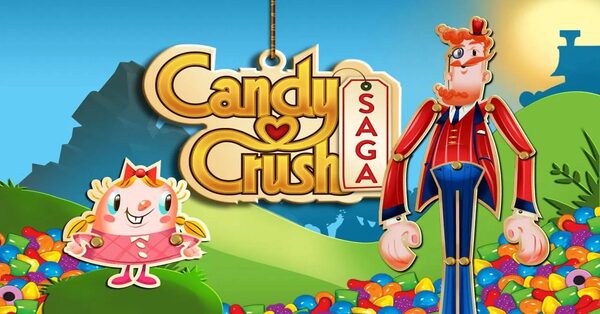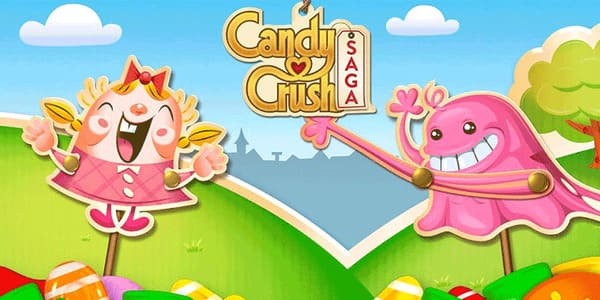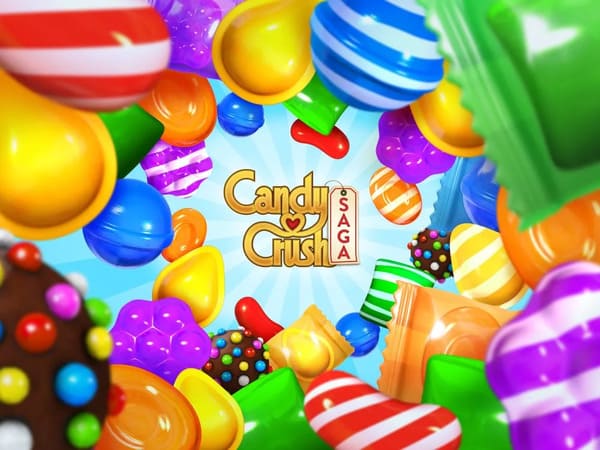Introduction
Candy Crush Saga, released in 2012 by King, has become a cultural phenomenon, capturing millions of players worldwide with its colorful graphics and engaging gameplay. However, beneath the sugary surface lies a more complex issue: the game's addictive mechanics. This article will delve deep into the psychological aspects of Candy Crush Saga that contribute to its addictive nature, exploring how game design elements exploit player behavior and create a cycle of dependence. We will analyze the various layers of this addiction, from initial engagement to long-term retention strategies, culminating in a discussion on the ethical implications of such design practices.

The Allure of Initial Engagement
The First Encounter
When players first download Candy Crush Saga, they are greeted with vibrant colors, engaging music, and a straightforward tutorial. This initial experience is crucial in establishing a strong first impression. The game employs an easy-to-understand format, allowing newcomers to feel competent almost immediately.
The Role of Immediate Rewards
Upon completing levels, players receive immediate gratification through visual and auditory feedback, including colorful animations and celebratory sounds. This instant reward mechanism taps into the brain's dopamine system, creating a sense of achievement and encouraging players to return for more.
Gamification of Challenges
The game's structure is highly gamified, with levels categorized by difficulty. Players encounter progressively harder challenges, enticing them to keep playing. The satisfaction of overcoming these obstacles fuels a desire to continue, reinforcing the notion of "just one more level."

Level Design and Flow
Candy Crush’s level design is meticulously crafted to maintain a state of flow—where players feel fully immersed and engaged. The balance between challenge and skill ensures that players never feel overwhelmed, which keeps frustration at bay while fostering an ongoing desire to play.
The Mechanics of Progression
Streaks and Bonuses
Candy Crush Saga employs various mechanics to keep players engaged over the long term. One significant aspect is the streaks—consecutive days of play that yield rewards. This not only fosters a habit but also taps into the fear of losing progress.
Time-Limited Events
Events like "sweet streaks" and "daily boosters" offer players incentives to log in every day. These time-sensitive challenges heighten the urgency to participate, amplifying the fear of missing out (FOMO). Players often find themselves returning to the game simply to claim these rewards.

Social Pressure and Competition
The integration of social features further complicates the gameplay experience. Players can connect with friends, compare progress, and send/receive lives. This social dynamic creates a competitive environment where players feel pressured to keep up.
The Impact of Leaderboards
Leaderboards serve as another motivating factor, instilling a sense of competition. Players often return to the game to improve their standing or to check how friends are progressing, reinforcing their engagement with the game.
The Escalation of Difficulty
Intentional Frustration
As players progress, they encounter levels designed to increase frustration. While early levels are relatively easy, later levels often require multiple attempts to complete. This shift is strategic; by introducing significant hurdles, the game encourages players to invest more time and, often, real money to overcome challenges.
The Pay-to-Win Model
Candy Crush Saga incorporates a pay-to-win element through in-game purchases. Players can buy extra moves, power-ups, or even whole lives, which leads to a cycle of spending as they try to conquer increasingly difficult levels. This monetization strategy capitalizes on the players' desire to progress, exploiting their frustration.
The Illusion of Control
A crucial psychological tactic used in Candy Crush is the illusion of control. Players often believe that they can succeed through skill alone, yet the game’s mechanics frequently rely on randomization. This creates a false sense of agency, keeping players hooked as they feel they are just one good move away from victory.
The Psychological Effects of Addiction
The Science Behind Gamification
Research has shown that gamification techniques can lead to addictive behaviors. The brain releases dopamine not just when achieving a goal, but also when anticipating a reward. Candy Crush capitalizes on this by making players anticipate rewards at every turn, creating an addictive feedback loop.
Impulse Control and Delayed Gratification
The game also tests players' impulse control. While some players may set limits for themselves, the design often encourages prolonged play, making it challenging to adhere to those limits. The brain’s inclination towards immediate gratification can easily lead to extended gameplay sessions.
Behavioral Reinforcement
Candy Crush employs operant conditioning techniques, rewarding players sporadically to maintain their interest. This reinforcement schedule—where rewards are given unpredictably—can lead to stronger engagement than a fixed schedule, as players are motivated to keep playing in hopes of receiving rewards.
The Role of FOMO and Scarcity
The Scarcity Principle
Candy Crush Saga utilizes the principle of scarcity to heighten player engagement. Limited-time offers and exclusive events create a sense of urgency that drives players to participate. This scarcity can lead to increased spending as players try to maximize their chances of obtaining rare items.
Fear of Missing Out (FOMO)
The combination of limited-time events and the ability to connect with friends amplifies FOMO. Players may feel compelled to log in and play to ensure they don’t miss out on rewards, fostering a continuous cycle of engagement that can border on obsession.
Long-Term Effects on Players
The psychological impact of FOMO can lead to detrimental effects. Many players report feelings of guilt or anxiety when unable to play, creating a toxic cycle that is difficult to break. This relationship with the game can affect daily life, leading to decreased productivity and social interactions.
Ethical Implications of Game Design
The Responsibility of Developers
As game designers continue to exploit psychological triggers for profit, ethical considerations come into play. Should developers take responsibility for the addictive nature of their games? The line between engagement and addiction is thin, and many argue that it is the duty of developers to create a balanced experience.
Regulation and Accountability
There is growing discussion around the need for regulations regarding game design, particularly concerning addictive mechanics. Advocates for responsible gaming argue that developers should prioritize player well-being over profit, suggesting transparency in monetization practices.
Case Studies of Game Addiction
Numerous cases highlight the darker side of gaming addiction, where players have experienced significant life disruptions due to compulsive gameplay. These stories underscore the importance of addressing addiction within the gaming industry and developing strategies to promote healthier gaming habits.
The Community Response
Support Groups and Resources
As awareness of gaming addiction grows, so too do support networks. Online forums and communities offer spaces for players to discuss their experiences and seek help. These resources can be invaluable for those looking to reclaim their time and find balance in their gaming habits.
Educating Players
Education plays a crucial role in combating addiction. Initiatives aimed at informing players about the psychological mechanisms behind their gaming habits can empower them to make healthier choices. By understanding the tactics employed by games like Candy Crush, players can develop strategies to mitigate addictive behaviors.
Changing Player Perspectives
As players become more aware of the potential pitfalls of gaming, there is a shift in perspective. Many are starting to prioritize mindfulness in their gaming experiences, setting limits, and taking breaks to ensure that gaming remains a source of enjoyment rather than a source of stress.
Conclusion
Candy Crush Saga epitomizes the intersection of engaging gameplay and addictive mechanics. The game's design exploits psychological triggers to foster a cycle of dependence, keeping players coming back for more. While this strategy has resulted in immense commercial success for King, it raises significant ethical concerns regarding player well-being. As awareness of these issues increases, both players and developers must engage in a dialogue about the responsibilities inherent in game design. By prioritizing player health and fostering awareness, the gaming community can work towards a more balanced and enjoyable gaming experience.




















